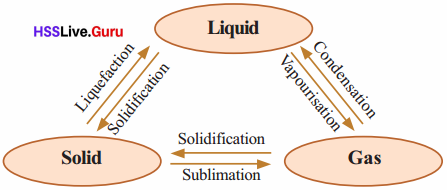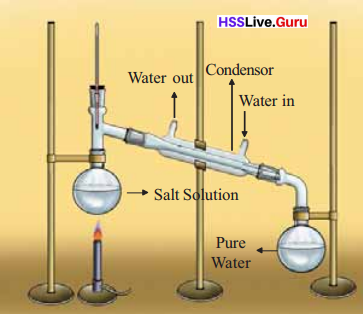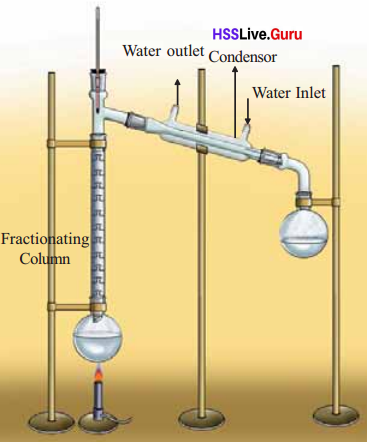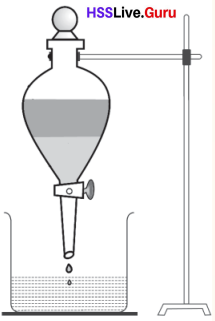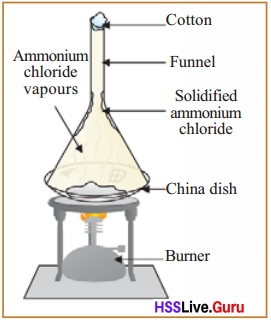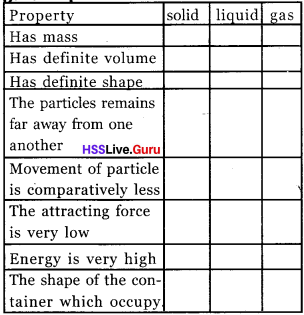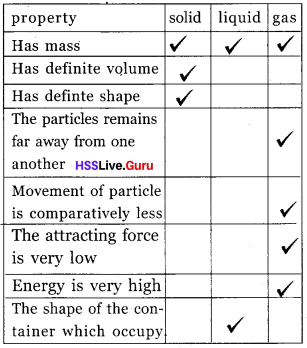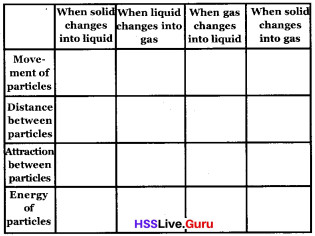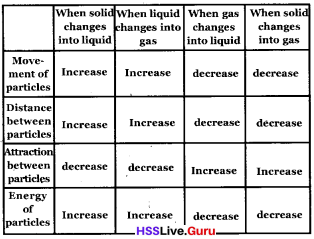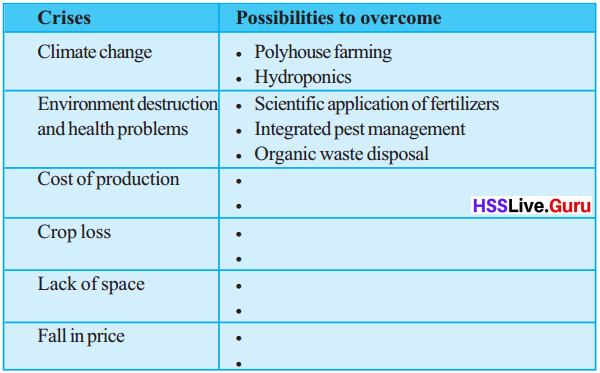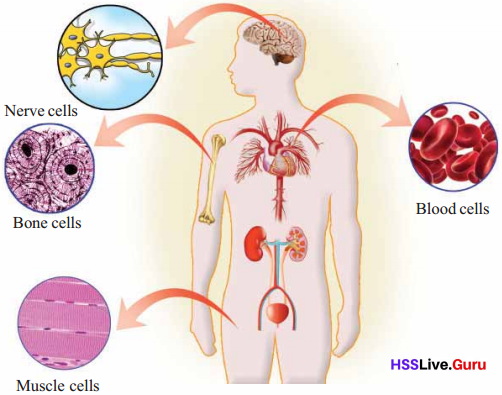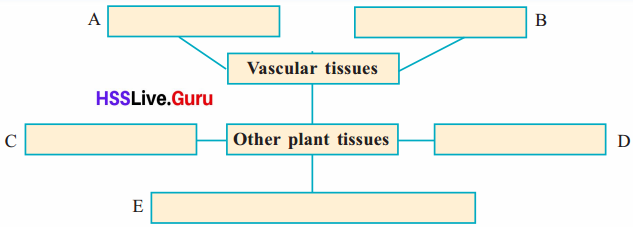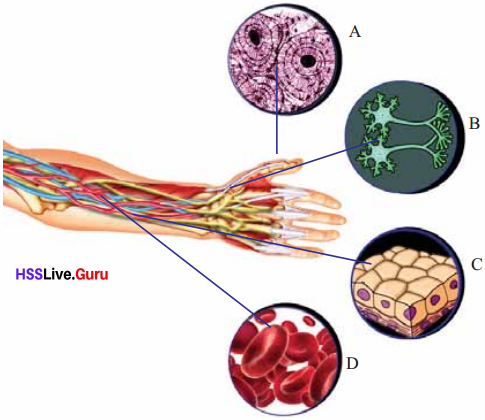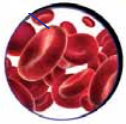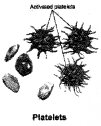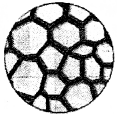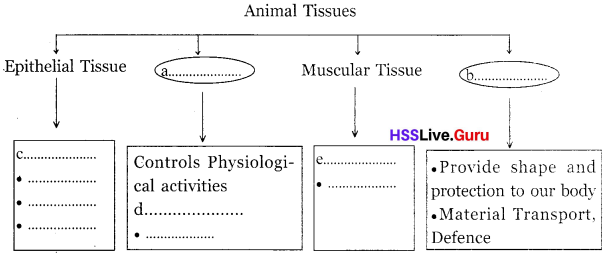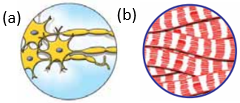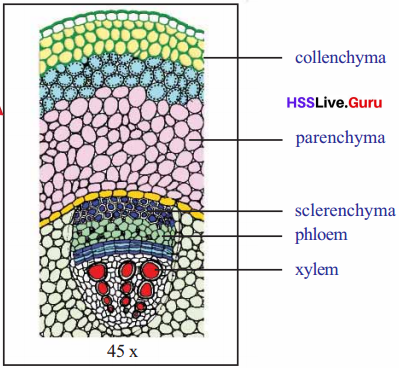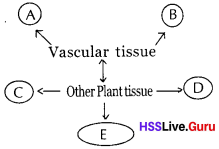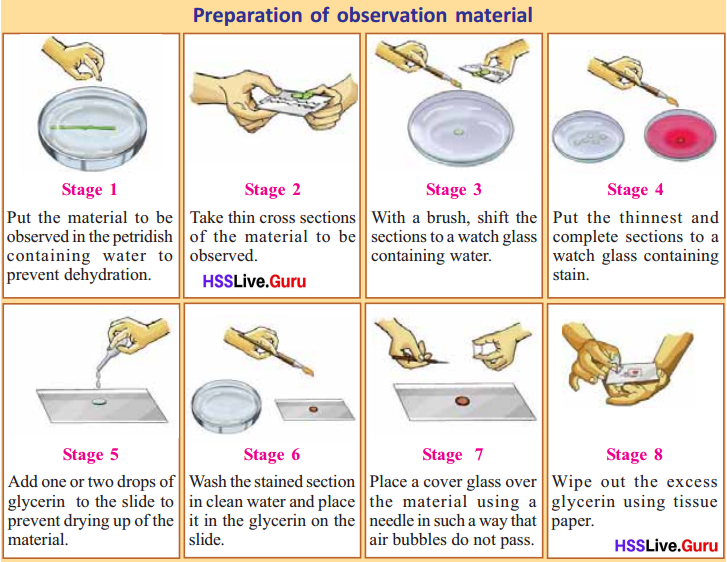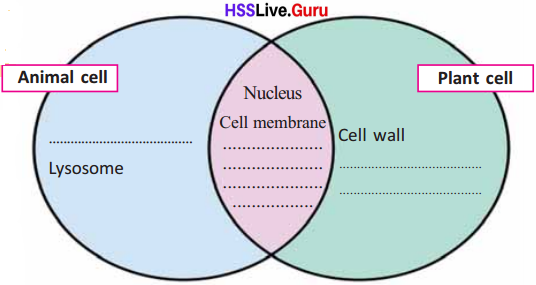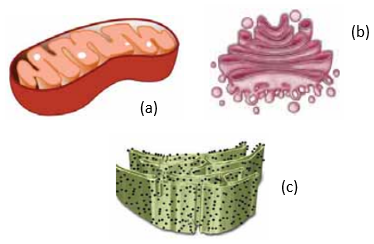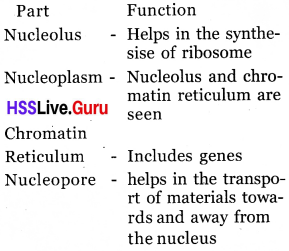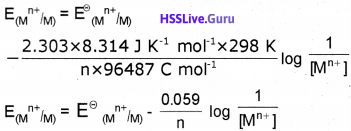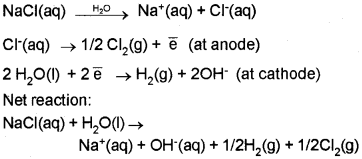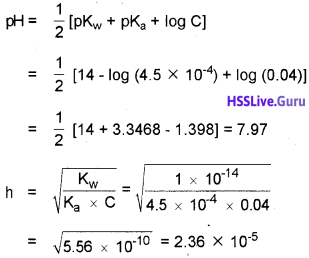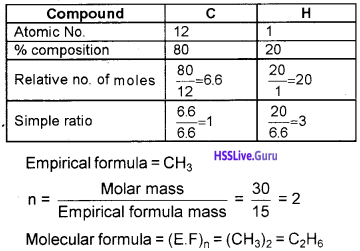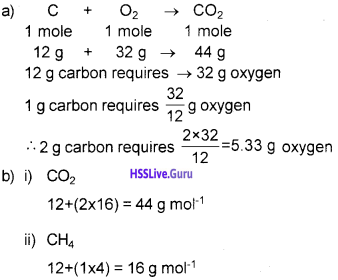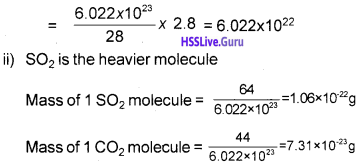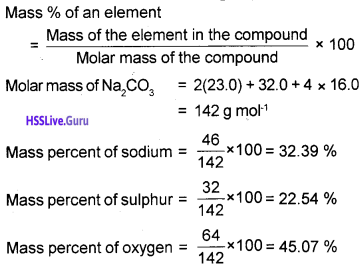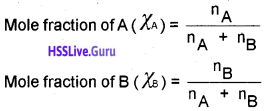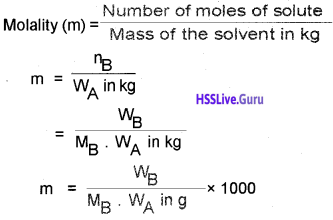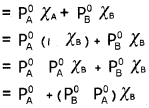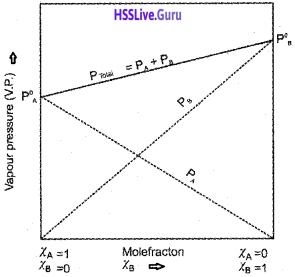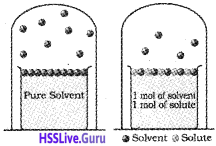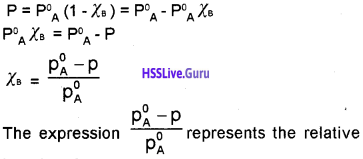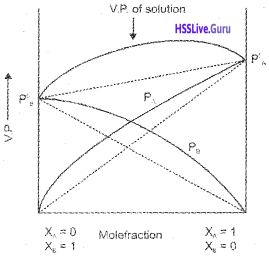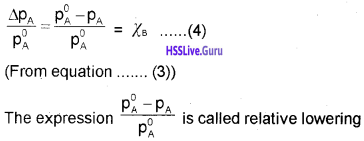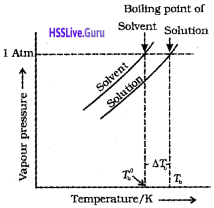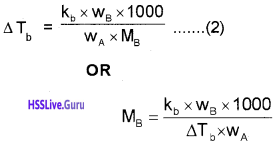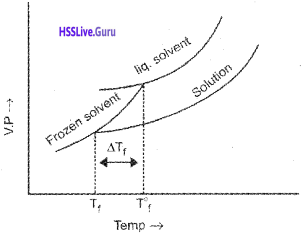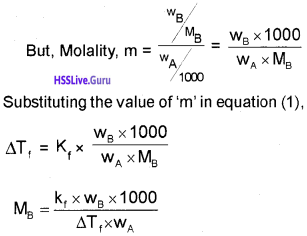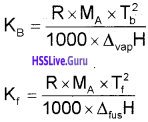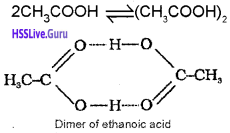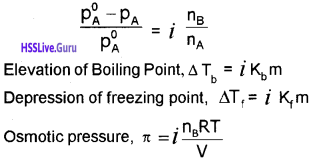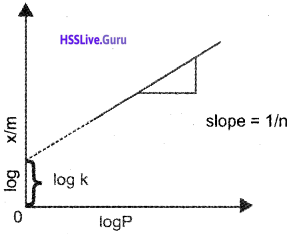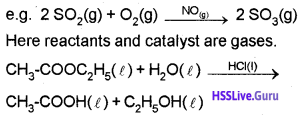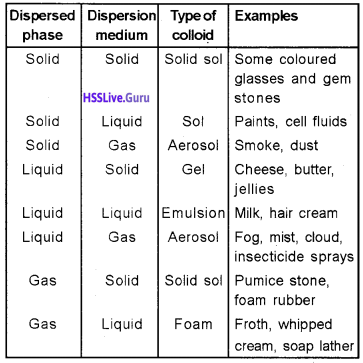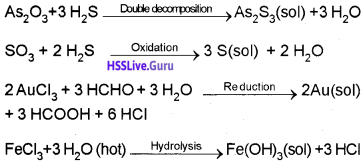Kerala State Syllabus 10th Standard Social Science Important Questions Chapter 1 Revolutions that Influenced the World
Answer the following. Score 1 each.
A Choose the correct answer.
Sslc History Chapter 1 Important Questions Question 1.
The sailor who discovered North America
Vasco da Gama
Megallan
Christopher Columbus
Answer:
Christopher Columbus
Question 2.
To which revolution is Boston Tea Party related?
French Revolution
American War of Independence
Russian Revolution
Answer:
American War of Independence
Question 3.
Under whose leadership was the Constitution of USA framed?
James Madison
James Ottis
Thomas Paine
Answer:
James Madison
Question 4.
The Commander-in-Chief of the colonial army against the British army.
Thomas Jefferson
George Washington
James Madison
Answer:
George Washington
Question 5.
The ruler who said: 7 am the State’.
Lotus XVI
Mary Antoinette
Louis XIV
Answer:
Louis XIV
Question 6.
The thinker who said: ‘Man is born free, but everywhere he is in chains’.
Rousseau
Voltaire
Montesquieu
Answer:
Rousseau
Question 7.
The emperor known as ‘Justinian of modern France’.
Louis XVI
Napoleon
Louis XIV
Answer:
Napoleon
Question 8.
The leader known as the ‘Protector’ in the Latin American countries.
Simon Bolivar
Jose De San Martin
Francisco Miranda
Answer:
Jose De San Martin
Sslc Social Science Important Questions Question 9.
The famous Russian writer who wrote the novel ‘The Mother’
Leo Tolstoy
Maxim Gorky
Frederick Engels
Answer:
Maxim Gorky
Question 10.
The leader of October Revolution
Vladimir Lenin
Alexander Kerensky
Nicholas II
Answer:
Vladimir Lenin
Question 11.
To which revolution is Boxer Rebellion related?
Russian Revolution
French Revolution
Chinese Revolution
Answer:
Chinese Revolution
Question 12.
Under whose leadership did China become the People’s Republic of China?
Mao Zedong
Chiang Kaishek
Sun Yat Sen
Answer:
Mao Zedong
Question 13.
The first President of USA
George Washington
James Madison
Thomas Jefferson
Answer:
George Washington
B. Answer in a sentence each.
Question 1.
Who were known as ‘Pilgrim Fathers’?
Answer:
A group of people who exiled to America from the religious persecution of the King of England in the 17th century on a ship called Mayflower and established colonies there were known as Pilgrim Fathers.
Question 2.
Who prepared the American Declaration of Independence?
Answer:
- Thomas Jefferson
- Benjamin Franklin
Question 3.
Which were the three Estates in French society?
Answer:
- First Estate : Clergy
- Second Estate; Nobles
- Third Estate : Middle class, farmers and craftsmen
Question 4.
Name the famous thinkers who influenced the French Revolution.
Answer:
- Voltaire
- Rousseau
- Montesquieu
Question 5.
Name the Russian writers who depicted the plight of workers and farmers in their works.
Answer:
- Maxim Gorky
- Leo Tolstoy
- Ivan Turgenev
- Anton Chekov
Social Science Class 10 Kerala Syllabus Chapter 1 Question 6.
Who were the famous leaders of Bolshevik party?
Answer:
Question 7.
Which were the basic ideals upheld by Dr. Sun Yat Sen?
Answer:
- Nationalism : to expel the Manchu dynasty and the imperial powers
- Democracy : to establish democratic rule
- Socialism: to control capital and distribute land equally
Question 8.
What was Boxer Rebellion? Why is it considered as anti-colonial struggle in China?
Answer:
Some secret organizations in China revolted against the foreign interference and domination in 1900. The emblem of these organizations was the Boxer’s fist. So this was known as the Boxer Rebellion.
It was against foreign dominance and the Manchu dynasty.
Question 9.
Which was the famous slogan of American War of Independence? Who framed it?
Answer:
- No taxation without representation
- James Ottis
Question 10.
Name the book of Rousseau which influenced the French Revolution greatly. What was its content?
Answer:
- Social Contract
- The government is the outcome of the contract between the ruler and the ruled.
Question 11.
Write the demands put forward by the First Continental Congress.
Answer:
- The revocation of the regulations enforced on industry and trade.
- Not to impose taxes without the approval of the people.
Question 12.
Why did the European countries under the – leadership of England organize themselves ” against Napoleon?
Answer:
The European countries feared that the reforms of Napoleon would spread all over Europe. It was the ideals of French Revolution and not Napoleon that they were afraid of.
Answer the following. Score 2 each.
Question 1.
Complete the following table.

Answer:

Kerala Syllabus 10th Standard History Chapter 1 Question 2.
Renaissance made significant changes in human thought, views and life. What are they?
Answer:
- Humanism
- Scientific temper
- Spirit of criticism
- Rational thinking
Question 3.
What did the people demand through the slogan ‘No taxation without representation’ framed by James Ottis?
Answer:
- Representation in government
- Membership in British Parliament
- Self rule
- Withdrawal of high taxes
Question 4.
Prepare a note on the ideologies of thinkers that stimulated the colonial people to fight against the exploitive laws of the British.
Answer:
Thinkers | Ideologies |
| John Locke | Everyone has some fundamental rights. No government has the right to suspend them. |
| Thomas Paine | There is something absurd, in supposing a continent (North-America) be perpetually governed by a foreign power (England) |
Question 5.
What all things are included in the American Declaration of Independence regarding human rights and freedom?
Answer:
- All are equal.
- Everyone has certain rights.
- Everyone has the right to life, liberty and the pursuit of happiness
- To secure these rights, governments should be formed with the consent of the governed.
Question 6.
What were the factors that aggravated the financial crisis in France at the time of the revolution?
Answer:
- The luxurious life and squander of the Bourbon kings, clergy and lords.
- The frequent wars waged.
- Frequent spells of drought and crop failure.
- Financial and military assistance given to American colonies in the American War of Independence.
Question 7.
What is meant by ‘Tennis Court Oath’? Evaluate its significance in the history of France.
Answer:
The members of the Third Estate assembled in a tennis court. They declared themselves as the National Assembly of France. They also swore not to leave until they had framed a constitution for France. This event is known as the ‘Tennis Court Oath’.
The Third Estate became the National Assembly and prepared the constitution.
Question 8.
Name the leaders of Latin American Revolution.
Answer:
- Francisco Miranda
- Simon Bolivar
- Jose De San Martin
Question 9.
What were the demands put forward by the Russian workers?
Answer:
- Abolish the private property system
- Everyone has to work
- All powers be given to workers and people.
- All means of production should be owned by people.
Question 10.
What is known as the ‘Bloody Sunday’?
Answer:
The workers organized a huge march in Petrograd on 9th January 1905 demanding political rights and economic reforms. The march was fired at by the soldiers and hundreds of demonstrators were massacred. This event is known as the ‘Bloody Sunday’.
Class 10 Social Science Chapter 1 Kerala Syllabus Question 11.
What is meant by ‘Open Door Policy’?
Answer:
- To acquire trade privileges in China, US State Secretary John Hey made a declaration. This is known as open door policy.
- As per this policy, America argued for equal rights and opportunities for all countries in Chinese market. The aim of this policy was to create an opportunity for the USA to interfere in China.
Answer the following. Score 3 each.
Question 1.
What is Mercantalism?
Answer:
The British treated the colonies in North America as centres for collecting raw materials for their industry and as market for selling.their products. This policy implemented by the British merchants with the help of their motherland in the American colonies is known as Mercantalism.
Question 2.
What is Boston Tea Party?
Answer:
The high tax levied by the British government on tea fired up strong protest in America. On 16 December 1773, a group of people disguised as the Red Indians, boarded the ships at night in the Boston Harbour and threw 342 chests of tea into the sea. This protest is known as the Boston Tea Party.
Question 3.
Match the statements of the French rulers correctly.
Ruler | Statement |
| Louis XIV | After me the deluge |
| Louis XV | If they can’t eat bread, let them eat cake. |
| Mary Antoinette | I am the state |
Answer:
Ruler | Statement |
| Louis XIV | I am the state |
| Louis XV | After me the deluge |
| Mary Antoinette | If they can’t eat bread, let them eat cake |
Question 4.
Prepare a note on the reign of terror in France.
Or
The period in France from July 1793 to July 1794 is known as reign of terror. Why?
Answer:
In July 1793, a Committee of Public Safety was constituted to control the internal affairs of France under the leadership of Robespierre. Leaders like Mirabeau and Danton were members in it.
Using guillotine, they did mass executions of suspected enemies of the Revolution. A lot of nobles and clergy including Louis XVI and his wife Mary Antoinette were killed. At last Robespierre was also executed. The reign lasted until July 1794 and is known as the Reign of Terror.
Question 5.
Why were the European countries afraid of Napoleon?
Answer:
Napoleon defeated the European alliance which was formed under the leadership of Britain against France. He seized the power in France in 1799. Though an autocrat, he instituted several reforms in France. In France, nationalism strengthened during the time of Napoleon. Napoleon invaded the European countries one by one. The European countries feared that the reforms of Napoleon would spread all over Europe. It was the ideals of French Revolution and not Napoleon that they were afraid of.
Role of Simon Bolivar in Latin American Revolution:
Simon Bolivar took up the leadership of Latin American Revolution from Miranda. He dedicated his life for the freedom of Venezuela, He defeated Spain in many battles after taking up the leadership of Columbian army.
He organized revolutions in Venezuela, Equador, Columbia and Peru and liberated them from Spain. He is reverently called the ‘Liberator’
in these countries. He is also known as the j George Washington of South America.
Question 6.
What were the circumstances that led the Russian workers to make different demands?
Answer:
- Farmers and factory workers in Russia led a tragic life under the autocracy of the Tsarist emperors who ruled Russia.
- The low agricultural production affected the farmer’s income. Moreover the landless farmers had to pay huge tax.
- Though Russia was rich in mineral resources, the industrial production was meagre. It was the foreigners who controlled majority of the industries.
Class 10 History Chapter 1 Kerala Syllabus Question 7.
What were the demands put forward by the Bolsheviks under Lenin against the provisional government? Why did they not approve the provisional government?
Answer:
- Russia should withdraw from the First World War.
- Power should be handed over to the Soviets.
- Seize the lands owned by the lords and distribute them among farmers.
- Make factories public property.
- The provisional government rejected all these demands.
Question 8.
The Cabinet under Lenin took some revolutionary measures. What were they?
Answer:
- Withdrew from the First World War.
- Seized the land owned by the lords and distributed them among the farmers.
- Factories, banks, transport facilities and foreign trade were brought under public ownership.
Question 9.
Arrange the items given in the boxes suitably.
| Bastille prison | The Preamble of the French Constitution |
| States General | The beginning of French Revolution |
| Tennis Court Oath | The symbol of despotism |
| Estates | Social classes in France |
| Montesquieu | Thinker |
| Declaration of Rights of Man | French Parliament |
Answer:
- Bastille prison – The symbol of despotism
- States General – French Parliament
- Tennis Court Oath – The beginning of French Revolution
- Estates – Social classes in France
- Thinker – Montesquieu
- Declaration of Rights of Man – The Preamble of the French Constitution
Question 10.
Explain the role of thinkers in France in making the people aware of the inequalities and exploitation.
Or
Explain how the thinkers and their ideologies paved the wav for French Revolution.
Answer:
The French thinkers who influenced the French Revolution were Rousseau, Voltaire and Montesquieu.
Rousseau
- His statement ‘man is born free but everywhere he is in chains’ spelled the importance of freedom.
- Declared that the people are the sovereign.
- Through his book ‘Social Contract’, stated that the government is the outcome of the contract between the ruler and the ruled.
Voltaire
- Ridiculed the exploitation of the clergy.
- Promoted rational thinking, ideals of equality and humanism.
Montesquieu
- Encouraged democracy and republic.
- Suggested division of powers of the government into legislature, executive and judiciary.
History Chapter 1 Class 10 Kerala Syllabus Question 11.
What is October Revolution? Explain its significance in the history of Russia.
Answer:
In October 1917, the Bolsheviks organized an armed rebellion against the provisional government. Kerensky fled from the country and Russia came under the control of the Bolsheviks. This event, through which the Bolsheviks attained power in Russia, is known as October Revolution.
Significance
- Russia withdrew from first world war.
- Land was distributed to farmers.
- Factories and banks under public ownership.
- Emergence of Soviet Union.
Question 12.
Analyse the circumstance which led to the transition of the Third Estate of the French Parliament called ‘Commons’ into National Assembly.
Answer:
- The Commons had no role in the administration.
- They had to pay tax to government, nobles and clergy.
- The status of one vote for each estate was against the interests of the Commons.
- The Commons wanted one vote for each person instead of one vote for each estate.
- The other two estates opposed this demand.
- Under this circumstance, the Commons declared themselves as the National Assembly of France and assembled in the nearby tennis court.
Question 13.
What was the social background that forced the Third Estate to struggle against the First and Second Estates of the French Society?
Answer:
- The Third Estate had no role in administration.
- Low social status.
- Paid taxes to government, nobles and clergy.
- First and Second Estates were exempted from all taxes.
- The King, nobles and clergy occupied majority of the cultivated land.
- The nobility lived by exploiting the peasants.
Answer the following. Score 4 each.
Question 1.
Which were the Mercantalist Laws implemented by Britain in the colonies of North America? How did they become a cause for the American War of Independence?
Or
How did Britain control the trade in American colonies through Mercantalist Laws?
Answer:
- The goods to and from the colonies must be carried only in British ships or ships built in the British colonies.
- Import tax must be paid for the import of tea, glass and paper.
- Products of the colonies like sugar, wool, cotton, tobacco, etc. could only be exported to England.
- British stamp must be affixed on all the legal documents, newspapers, pamphlets and license.
- The colonial people opposed these exploitations which resulted in American War of Independence.
Question 2.
Write the results of American War of Independence.
Or
The American War of Independence greatly influenced the later history of the world in different ways. Explain how?
Answer:
- Gave direction and motivation to the later freedom struggles and revolutions all over the world.
- Put forward the concept of republican form of government.
- Prepared the first written constitution.
- Contributed to the concept of federal system that ensured freedom and authority of states in the union.
Question 3.
What were the reforms instituted by Napoleon in France?
Or
What were the changes brought about in the social, economic and political fields of France during the time of Napoleon?
Answer:
- Farmers were made the owners of land.
- Prepared a new code of law by codifying the existing laws.
- Established Bank of France to centralise finance.
- Formed ‘sinking fund’ with the aim to avoid public debt.
- Exercised state’s control over the clergy.
- Constructed several roads for transportation.
Question 4.
Write the features of February Revolution.
Answer:
- Workers and soldiers joined together against the Tsar.
- Opposition to Tsarist rule grew strength.
- Tsar was thrown out of power.
- A provisional government was formed.
Sslc History Chapter 1 Question 5.
How far were the middle class of France responsible for the French Revolution?
Or
The inequalities and exploitation suffered by the Third Estate was the basic reason for the French Revolution. Substantiate.
Answer:
The French middle class included traders, writers, lawyers, officials, teachers, bankers, farmers and craftsmen.
- They had no role in the administration.
- Paid land tax namely, ‘Taille’ to the government.
- Had low social status.
- Paid taxes to clergy and nobles.
The middle class were dissatisfied with the prevailing social order. They realised that it was impossible for them to achieve their demands under the existing order. Therefore they decided to overthrow the government by leading the revolution.
Question 6.
Evaluate the results of the Russian Revolution.
Answer:
- Seized the land of lords and distributed among the peasants.
- The Russian Revolution transformed Russia from centuries old backwardness and helped her to attain economic, scientific and technological progress.
- Formation of Union of Soviet Socialist Republic (USSR) by consolidating different Soviet Republics and a new constitution.
- New constitution came into force in 1924.
- Spread the socialist ideas all over the world.
- Gave importance to public sector.
- Introduced centralized planning.
Question 7.
Evaluate the importance of the American War of Independence in the struggle for freedom by people all over the world.
Answer:
American War of Independence was a historic struggle launched by the English settlers of the colonies of North America against the mother country. It was a mass movement of the people against denial of fundamental rights, denial of freedom, high taxes and denial of representation in the government.
The historic American Declaration of Independence contains many provisions for the enforcement of rights and freedom. Its main provisions were All are equal, Everyone has certain rights, People have the right to change the governments that deny them their rights’.
This declaration became a model for the protection of human right activities. It also put forward the concepts of republican form of government and federal state to the world. Its yet another important noble idea was the concept of a written constitution to rule the nation.
Question 8.
Evaluate the background of the French
Revolution.
Answer:
- Autocratic rule of the kings.
- Luxury and extravagance of kings, nobles and clergy.
- Social inequality – the division of the French society into three estates.
- Financial crisis due to luxurious life and squander of kings, nobles and clergy, frequent wars by kings, frequent spells of drought and crop failure.
- Emergence of middle class due to inequality, denial of rights and freedom and exorbitant taxes.
- Influence of thinkers
Question 9.
Discuss the contributions of French Revolution to subsequent history of the world.
Or
Analyse the influence of the French Revolution on the socio political system that existed in Europe.
Answer:
- End of feudal system in Europe.
- Proclaimed that nation is not merely a region, but the people.
- Contributed the concept of people’s sovereignty.
- Led to the emergence of nationalism.
- Helped the growth of the piiddle class.
- Threatened the autocratic rulers in Europe.
- Stimulated all the later revolutions in the world.
- Spread the ideas of liberty, equality and fraternity.
Question 10.
Arrange the table suitably.
A | B |
| Napoleon | Bolshevik |
| Sun Yat Sen | Common Sense |
| Lenin | Waterloo |
| Thomas Paine | Kuomintang |
Answer:
A | B |
| Napoleon | Waterloo |
| Sun Yat Sen | Kuomintang |
| Lenin | Bolshevik |
| Thomas Paine | Common Sense |
Question 11.
Compare the influence of Russian Revolution with that of the French Revolution.
Answer:
Russian Revolution | French Revolution |
| End of despotism of kings | End of despotism of kings |
| End of feudal system | End of feudal system |
| Put an end to class division | Put an end to social division |
| Ownership by workers | Sovereignty of people |
| Emergence of Soviets | Emergence of middle class |
| Mother of socialist movements | Mother of revolutions |
| Spread of socialist ideology | Spread of republican ideology and human rights |
Social Science Class 10 Chapter 1 Question Answer Question 12.
Compare the February Revolution and the October Revolution.
Answer:
February Revolution | October Revolution |
| Led by Mensheviks | Led by Bolsheviks |
| Russia did not withdraw from the First World War | Russia withdrew from the First World War |
| Put an end to Tsarist regime | Put an end to Menshevik rule |
| Lords continued as owners of land | Land was distributed among farmers |
| Did not give importance to public ownership | Factories, banks, etc. were brought under public ownership |
Question 13.
“When France sneezes, the rest of Europe catches cold : Metternich”
This was the remark made by Austrian Chancellor Metternich about the impact of French Revolution. Based on this remark, analyse how French Revolution influenced France and Europe.
Answer:
French Revolution is considered as the mother of all revolutions. The ideals of French Revolution namely liberty, equality and fraternity influenced and gave strength to democratic believers of not only Europe, but the whole world. Following the French Revolution, Napoleon became the ruler of France and he introduced many reforms stimulated by the ideals and aims of French Revolution.
The European countries under the leadership of England tried to restore the old political structure and social order. The triumph of the slogans of liberty, equality and fraternity frightened them. Besides England, European countries like Russia, Prussia’ and Austria had to ensure that similar revolutions as that of France should not take place in their countries.
France became the centre of attraction to Europe following the revolution. New ideas and ideologies always came from France and it used to influence the rest of Europe.
Question 14.
Prepare a note on the background of Latin American Revolution.
Answer:
The Spanish and Portuguese
- Looted the resources and wealth of the people.
- Enslaved the natives to work.
- Used the people and resources of the colonies for the comfort of the chiefs of colonies.
- Destroyed the indigenous Latin American culture.
- Implemented European culture and life style in the colonies.
- Racial discrimination towards the colonial people.
- Imposed trade regulations.
Question 15.
Write the features of the reforms introduced by Dr. Sun Yat Sen in China.
Answer:
- Nationalism : To end monarchy and imperialist rule
- Establish democratic rule
- Socialism
- Opposition to foreign domination
- Measures for the progress of agriculture and industry
- Co-operation with the Communists
Question 16.
Evaluate the changes that occurred in the administrative structure of France following the French Revolution.
Answer:
- End of Feudalism.
- Uniform system of administration in France.
- Equal taxation over all sections of people.
- Abolished the special privileges enjoyed by higher Estates.
- Church was brought under the control of the state.
Question 17.
Identify the correlation between the two items in section A and similarly complete section B.
i. A : Thomas Paine : American War of Independence
B : Rousseau : ……………….
ii. A : Jose De Sanmartin : Latin American Revolution
B : Mao Zedong : …………………
iii. A . October Revolution : Russian Revolution
B : Long March : …………….
iv. A : French Revolution : 1789
B : Russian Revolution – : ……………….
Answer:
i. A : Thomas Paine : American War of Independence
B : Rousseau : French Revolution
ii. A : Jose De Sanmartin : Latin American Revolution
B : Mao Zedong : Chinese Revolution
iii.A : October Revolution : Russian Revolution
B : Long March : Chinese Revolution
iv.A : French Revolution : 1789
B : Russian Revolution : 1917
Answer the following. Score 5, 6 each.
Question 1.
Prepare a description showing the causes that led to the American War of Independence.
Answer:
By the 18th century, England had established 13 colonies in the eastern coast of North America. The British treated these colonies as centres for collecting raw materials for their industry and as market for selling their products. The policies of the mother country England led to the freedom struggle in the colonies.
Mercantalist Laws:
- The policy adopted by the British merchants with the help of their motherland in the American colonies is known as Mercantilism.
- The goods to and from the colonies must be carried only in British ships or ships built in the colonies.
- British stamps must be affixed on all the legal documents, newspapers, pamphlets, license, etc.
- Import tax must be paid for the import of tea, glass, paper, etc.
- Products of the colonies like sugar, wool, cotton, tobacco, etc. could only be exported to England.
- Colonies must provide food and quarters for the British troops which were maintained in the colonies.
Influence of thinkers:
The ideologies of thinkers like John Locke and Thomas Paine stimulated the people of the colonies to fight against the exploitative laws of the British. John Locke said : ‘Everyone has some fundamental rights. No government has the right to suspend them.’ Thomas Paine said : ‘There is something absurd, in supposing a continent (North America) be perpetual ly governed by a foreign power (England).
No taxation without representation:
This was a slogan framed by James Ottis that thundered along different parts of North America in the 18th century. The slogan showed the desire for freedom and the hatred towards the mother country nurtured by the colonial people.
Boston Tea Party:
The high tax levied by the English government on tea fired up strong protest in America. On 16 December 1773, a group of people disguised as the Red Indians, boarded the ships at night in the Boston Harbour and threw 342 chests of tea into the sea. This protest is known as the Boston Tea Party.
Continental Congress:
The delegates of all the colonies except Georgia met at Philadelphia in 1774 to protest against the policies and rules imposed by England. It is known as the First Continental Congress. Subsequently, people of the colon ies submitted a petition to the king of England.
They demanded the revocation of the regulations enforced on industry and commerce and not to impose tax without the approval of the people. But the king sent a military force to suppress the people. This led to the war between England and the colonies. The Second Continental Congress held at Philadelphia in 1775 elected George Washington as the Commander-in-chief of the Continental Army.
The American Continental Congress issued the famous Declaration of Independence on 4 July 1776: The war between England and the colonies in North America that began with the Declaration of Freedom, ended in 1781.
By the Treaty of Paris in 1783, England ratified the freedom of 13 colonies. George Washington became the first President of USA. The United States of America came into being with the first written constitution in the world.
History Class 10 Chapter 1 Kerala Syllabus Question 2.
Assess the reasons that led to the French Revolution.
Or
Explain the causes of the French Revolution on the basis of the following hints.
i) Despotic rulers
ii) Influence of thinkers
iii) Social inequality
iv) Financial crisis
Answer:
The French Revolution of 1789 was the movement against centuries old despotic kingship and feudal order in France. The aim of the Revolution was to rebuild France on the basis of the ideals of Liberty, Equality and Fraternity. The following are the causes for the Revolution.
i) Despotic rule of kings:
It was the despotic misrule of the Bourbon kings who ruled France in the 17th and 18thcenturies that led mainly, to the revolution. These kings believed in the divine right of kingship. Louis XIV who ruled France in the 17th centuiy said: ‘I am the state’.
He also said ‘God has given power to the king over his subjects and only God has the authority to question him’. Louis XV of France had the attitude ‘After me, the deluge’. The kings who concentrated all powers led a life of squander and extravagance. The majority of the people of France led a life of misery. A minority including the rulers led a life of luxury and extravagance.
iii) Social inequality:
The social inequality that prevailed in France was another reason for the Revolution. In French society, the people did not have equal rights. The French society was divided into three strata known as Estates.
The clergy formed the First Estate. They held vast land. They collected the tax called ‘Tithe’ from farmers. The clergy were exempted from all taxes. They also controlled higher positions in administration. The nobility formed the Second Estate. They engaged in military service. Collected various taxes from farmers. Made farmers work without wages. Exempted from taxes. Led luxurious life and held vast lands.
The Third Estate consisted of the middle class including traders, writers, lawyers, officials, teachers, bankers, farmers and craftsmen. They had no role in the administration. Paid land tax namely ‘Taille’ to the government. Paid taxes to clergy and nobles and had low social status.
ii) Influence of thinkers :
Various thinkers in France played an important role in making the people aware of the inequalities and exploitation.
Rousseau
- Spelled out the importance of freedom with the statement ‘Man is bom free but everywhere he is in chains’.
- Declared that the people are sovereign.
Voltaire
- Ridiculed the exploitation of clergy.
- Promoted rational thinking, ideals of equality and humanism.
Montesquieu
- Encouraged democracy and the republic.
- Suggested division of powers of the government into legislature, executive and judiciary.
iv) Financial crisis:
The following brought France to the brink of bankruptcy:
- The luxurious life and squander of Bourbon kings, nobles and clergy.
- Frequent wars
- Frequent spells of drought and crop failure.
- Financial and military assistance given to American colonies in theAmerican War of Independence.
Summoning of States General:
To overcome the financial crisis, Louis XVI, the king decided to propose new taxes. So to levy new taxes upon the commoners, Louis XVI summoned the French Parliament called States General.
Similar to the French society, the States General also had three estates. The first two Estates argued for Estate wise single voting system. The Third Estate demanded individual vote for each member of all the three estates.
Tennis Court Oath:
While the arguments went
on, the members of the Third Estate declared themselves as the National Assembly of France. They assembled in the tennis court nearby and swore not to leave until they had framed a new constitution for France. This event is known as the ‘Tennis Court Oath’. This was the beginning of the French Revolution.
Question 3.
Analyse how the February Revoltuion and October Revolution led to the formation of Soviet Union.
Or
Explain the causes of the Russian Revolution on the basis of the following indicators.
• Autocratic rulers
• Influence of marxists ideology
• Pathetic life of people
• Role of Bolshevik party
Or
Explain the circumstances that led Bolsheviks into power in Russia.
Answer:
Russian Revolution of 1917 has greatly influenced the world. Its causes are discussed below.
Autocracy of Tsars:
Russia was ruled by emperors known as Tsars. They were despots. Farmers and factory workers in Russia led a tragic life under the autocracy of the Tsarist emperors.
Economic causes:
The low agricultural production affected the farmer’s income. Moreover, the landless farmers had to pay huge tax. Though Russia was rich in natural resources, their industrial production was meagre.
Influence of thinkers and writers:
Writers like Maxim Gorky and Leo Tolstoy depicted the plight of the workers and farmers in their works. The Marxist ideologies formulated by Karl Marx and Frederick Engels stirred the workers. They called for establishing the supremacy of the workers instead of that by the capitalists.
Social Democratic Party:
Trade unions were formed to find remedies for the plight of the workers. Based on the Marxist ideologies, the Social Democratic Workers Party was formed. Later this party was split into the Mensheviks and the Bolsheviks. The main leaders of the Bolsheviks were Lenin and Trotsky. Alexander Kerensky led the Mensheviks.
Rousseau – Japanese war:
The crisis reached its worst when Russia was defeated in the Russia- Japan war in 1905. The workers organized a huge march at Petrograd on 9 January 1905 demanding political rights and economic reforms. The march was fired at by the soldiers and hundreds of demonstrators were massacred. This event is known as the Bloody Sunday. Workers’ organizations called ‘Soviets’ were formed all over Russia to conduct strikes.
February Revolution:
When strikes gained strength, the emperor Tsar Nicholas II formed a legislative assembly called Duma’. When the First World War started in 1914, the Tsar decided to participate in it, ignoring the protests from Duma. A lot of Russian soldiers were killed in this war.
Food shortage became severe by 1917. In February 1917, workers and soldiers joined together and captured Petrograd. Tsar Nicholas II was thrown out of power. A provisional government was formed under Alexander Kerensky, the Menshevik leader. This event is known as Februaiy Revolution.
Lenin and Bolshevik Party:
A group of Soviets did not approve the provisional government. Lenin, the leader of the Bolsheviks argued that the entire power should be transferred to the Soviets if they were to realize the aims of the revolution. The Bolsheviks and the Soviets supported him. They propagated that only a proletarians’ government could eradicate centuries old economic backwardness and inequality. They put forward demands like:
- Withdraw Russia from the First World War.
- Seize the lands owned by the lords and distribute them to farmers.
- Make factories public property.
October Revolution:
In October 1917, the Bolsheviks started an armed rebellion against the provisional government. Kerensky fled from the country. Russia came under the control of the Bolsheviks. This event in which the Bolsheviks attained power is known as the October Revolution. A proletarians’ government came under the control of Lenin in Russia.
Class 10 History Chapter 1 Question 4.
Evaluate the role of Dr. Sun Yat Sen and Mao Zedong in the Chinese Revolution.
Or
Describe the establishment of the People ’s Republic of China by analyzing different phases of the Chinese Revolution.
Answer:
The Chinese Revolutions were organised under the leadership of Dr. Sun Yat Sen in 1911 and in the 1930’s and 1940’s under the leadership of Mao Zedong. The reasons are discussed below.
In the 20th century, China witnessed revolutions against foreign rule and monarchy. The colonial powers of Europe and America adopted policies in China, different from the ones they had implemented in the colonies of other parts of the world. They were opium trade and open door policy. As a result, many parts of China came under tile control of imperial powers. Chinese trade and industries were controlled by foreigners.
Role of Sun Yat Sen:
The Manchu dynasty that ruled China favoured the foreign interference and domination. In 1911, a revolution took place under the leadership of Sun Yat Sen against the Manchu dynasty. This ended monarchy in China. After the revolution, Kuomintang Party established a republican government in Southern China under the leadership of Sun Yat Sen.
He gave importance to ideologies like nationalism, democracy and socialism. He advocated to nullify the unjust treaties signed with the foreign countries and wanted to maintain equality with the western countries. The Kuomintang republic adopted measures for the progress of agriculture and industry.
The Chinese Communist Party was formed during this time. In the beginning, the Kuomintang and the Communists co-operated with each other. But this co-operation was disturbed when Chiang Kaishek became the head of the republic following the death of Sun Yat Sen.
Role of Mao Zedong:
Mao Zedong was the leader of Chinese Communist Party. Chiang Kaishek ascertained military autocracy in China. He gave opportunity for foreign powers including America to freely interfere in China and did not co-operate with the Communists. Coal and industries, banking and foreign trade were all controlled by foreign countries. The Communists protested against the policy of Chiang. They were brutally suppressed.
At that time, Mao Zedong rose to the leadership of the Communist Party. In 1934, under the leadership of Mao Zedong, an adventurous journey started from Kiangsi in South China to Yanan in North Western China. Throughout the journey, they seized out agricultural lands and villages from lords and distributed them among the farmers.
The journey covered around 12000 kms. So it is known as the ‘Long March’. Mao Zedong and the Communist Party became the symbol of the struggle of the Chinese against foreign power. The Red Army under the leadership of Mao Zedong captured Nanking, the capital of Kuomintang government in April 1949. So Chiang-Kaishek had to seek political asylum in Taiwan. China became the People’s Republic of China on 1st October 1949 under the leadership of Mao Zedong.
Question 5.
Explain the causes of the Latin American Revolution and the consequent liberation from ‘ European domination.
Answer:
Latin America consists of South and Middle America and the West Indies Islands. Spain and Portugal established colonies throughout these regions. So the people of Latin America rose in revolt against the imperialist powers. The reasons for the revolt are discussed below.
Policies of Imperial Powers
The Europeans looted the wealth and resources of Latin American countries and even erased their traditional culture. After colonizing the entire Latin America, the Spanish and the Portuguese propagated their language, religion and customs there. They built houses and churches in Spanish style.
Several schools were established for imparting Spanish system of education. The Spanish farming methods and crops were adopted. Racial discrimination towards the people of the colonies was enforced in all walks of life.
The Europeans took away gold, silver, etc. from the Latin American colonies. They never allowed the people of the colonies to engage in trade with countries other than Spain. The things produced in Spain were not permitted to be produced in the colonies. People had to work in hazardous environment in mines without any safety measures. The Europeans enslaved the natives to work in plantations.
Influence of other revolutions:
The success of American War of Independence and the French Revolution inspired the Latin American people to fight against the European domination.
Leaders of the revolution:
Francisco Miranda, Simon Bolivar and Jose De San Martin were the leaders of Latin American Revolution. Under their leadership, Latin American colonies were liberated. By 1825 almost all the Latin American colonies became free.
Question 6.
Choose the most suitable items related to Column A from Columns B. and C and arrange the table.
A | B | C |
| American War of Independence | Simon Bolivar | Social Contract |
| French Revolution | Lenin | Long March |
| Latin American Revolution | George Washington | Second Continental Congress |
| Chinese Revolution | Rousseau | October Revolution |
| Russian Revolution | Mao Zedong | Spain |
Answer:
A | B | C |
| American War of Independence | George Washington | Second Continental Congress |
| French Revolution | Rousseau | Social Contract |
| Latin American Revolution | Simon Bolivar | Spain |
| Chinese Revolution | Mao Zedong | Long March |
| Russian Revolution | Lenin | October Revolution |
Std 10 History Chapter 1 Question 7.
Match the columns suitably.
A | B |
| Maxim Gorky | The Ten Days that Shook the World |
| Pablo Neruda | The Mother |
| Thomas Paine | Battleship Potemkin |
| John Reed | Heights of Macchu Picchu |
| Sergei Eisenstein | Common Sense |
Answer:
| A | B |
| Maxim Gorky | The Mother |
| Pablo Neruda | Heights of Macchu Picchu |
| Thomas Paine | Common Sense |
| John Reed | The Ten Days that Shook the World |
| Sergei Eisenstein | Battleship Potemkin |
Question 8.
Prepare a Timeline including the following events.
Peoples’ Republic of China – 1815
Boston Tea Party – 1900
February Revolution – 1949
Battle of Waterloo – 1773
Boxer Rebellion – 1917

Question 9.
Arrange the following events in chronological order.
i) Tennis Court Oath
ii) First Continental Congress
iii) October Revolution
iv) Formation of Chinese Republic
v) Declaration of American Independence
Answer:
i) First Continental Congress (1774)
ii) Declaration of American Independence (1776)
iii) Tennis Court Oath (1789)
iv) Formation of Chinese Republic (1911)
v) October Revolution (1917)
Additional Information / Extra Reading
Bastille Fort:
Bastille was a medieval fortress on the east side of Paris, built by the end of the 14th century. The first stone of fortress was laid on April 22, 1370 during the reign of Charles V of France. When completed, it had 8 towers 30 metres high, linked by walls of equal height and surrounded by a moat more than 24 metres wide. Cardinal Richelieu was the first to use Bastille as a state prison.
Later Bastille was considered a symbol of the despotism of the ruling Bourbon dynasty. It was a rumour that Bastille had great storage of arms and ammunitions that forced the Parisian mob to attack it. On the morning of July 14,1789 when only seven prisoners were in the jail, a crowd stormed Bastille prison. Since Bastille was considered as the symbol of royal power, 14th July, the day of its destruction is celebrated as National Day in France.
Jacobins and Girondins:
Jacobins and Girondins were two prominent political parties in the French National Assembly. Jacobins were extreme revolutionaries and Girondins were moderates. The Jacobins wanted to make France a Republic by overthrowing monarchy. The Jacobin Society formed in 1789 had leaders like Marat, Danton and Roberspierre.
The leaders of Girondins were from Girond, the south west part of France. They aimed at making France a republic by abolishing monarchy. The main leaders of Girondins were Brissot, Condorcet and Petion.
Tipu Sultan and French Revolution:
The French Revolution had echoes in India when the ruler of Mysore Tipu Sultan declared his solidarity with the Revolution and planted the Tree of Liberty in his Capital Srirangapattanam. He also became a member of French Club Jacobin.
Bourgeoisie:
The word bourgeoisie originated from the French word bourgeois which means dwellers in cities. The feudal society was divided into two: lords and serfs. A new class of traders emerged between the two. This middle class was called bourgeoisie. They amassed great wealth through trade and industry. So they were the founders of capitalism.
Ten Days that Shook the World:
Ten Days that Shook the World is a book written by American journalist and socialist John Reed about the October Revolution in Russia in 1917.
Winter was coming on .. the terrible Russian winter …. on the freezing front miserable armies continued to starve and die, without enthusiasm. The railways were breaking down, food lessening, factories closing. The desperate masses cried out that the bourgeoisie was sabotaging the life of the people ………. The internal affairs of the country becoming miserable…. Lenin asked the people to raise the slogan ‘peace and food for Soviets’ and wanted to usurp power. Following this, the Bolsheviks captured Russian State Bank, Telephone Exchange and the other government institutions ………
Kerala Syllabus 10th Standard Social Science Important Questions




